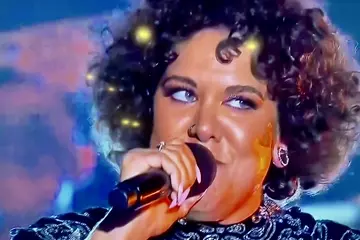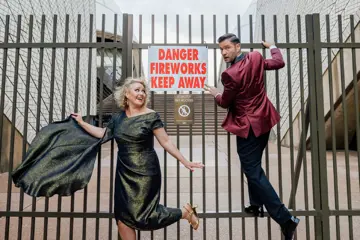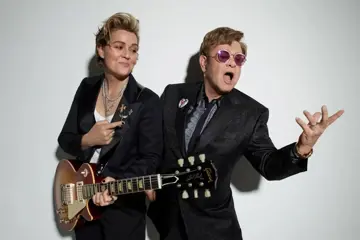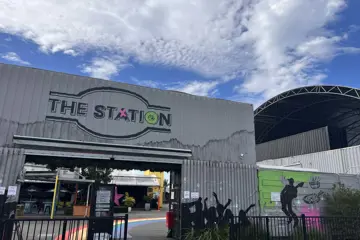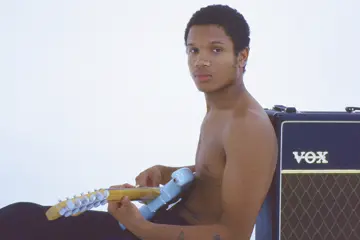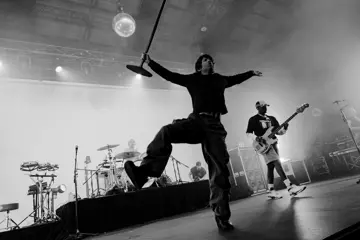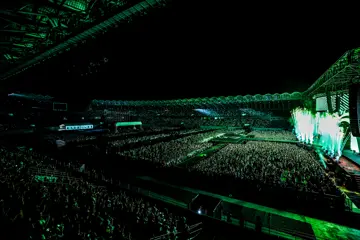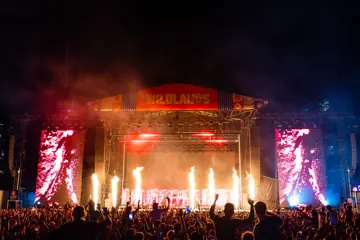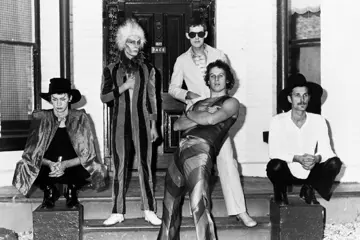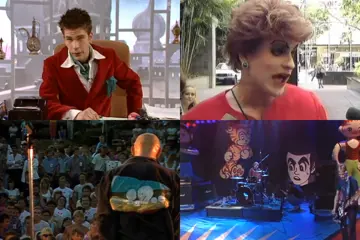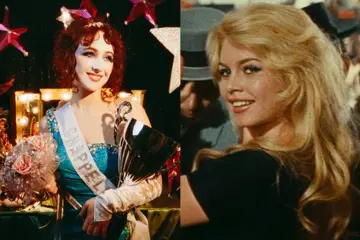There's a bend on the Tullamarine Freeway where a suburb has popped up on the adjacent hill in the last couple of years. No big deal, you say, Melbourne's urban spread is happening so fast it's bloody difficult to get a handle on the scale of it. But this place is different. This place sits on a topographical rarity of the area – a hill. It's an ugly place. McMansions jut from the hillside like warts, the barren land sulks in dull browns and there's nary a tree been planted.
The cover artwork of New Estate's latest, and fourth, album Recovery carries an image, a painting to be specific, of new estate Gowanbrae, Victoria, 3043. This is the suburb mentioned above. But there's trickery at play here. New Estate keyboardist/guitarist/singer Mia Schoen created the work and, in doing so, injected beauty that is otherwise unapparent from the freeway. It may be something to do with the composition – the clouds drifting lazily above the landscape – or the soft colours she's used. Whatever it is, Gowanbrae is instantly recognisable but also strangely different.
“You can see it from the Tullamarine, it's about ten minutes away from where we rehearse, my house,” says Schoen. “I've been studying that area for a long time now since I moved to that house back in 2004. I'm really drawn to the new estate as a subject 'cause it's kind of like a site of change. So I've been documenting this change. It's a new estate called Gowanbrae, which is unusual in a sense 'cause it's like an island. You've got the new estate here, then you've got the Tullamarine Freeway, then you've got the goods/service train line there and the Moonee Ponds Creek, so there's only one road in and one road out and it's only by car. They're this little isolated new estate in quite a built-up area.
“A lot of the paintings I've been doing over the last few years have been of that place 'cause I've managed to see the change. When I first arrived in the area it was just a bald hill, there was nothing else there and now it's covered in houses – the classic McMansions.”
“It could be a metaphor for our music as well,” adds bassist Toby Dutton, “building up and forever changing [laughs].”
Don't miss a beat with our FREE daily newsletter
Recovery could be described in a similar way to its artwork. Though the 13 songs read as unmistakably New Estate, there is a boldness of sound that is a little exotic in terms of their signature. All the trademarks are there - it's scraggy pop with heavy Flying Nun references - but the mood is somehow lighter. It's a big record and, as Schoen explains, they took their sweet time over it. “We really tried to treat each song as its own entity,” she says. “We really weren't going for this consistency where everything had this coherent, consistent sound. From the outset, we decided we were going to record it and treat each song as its own little world.
“So we'd record a couple of songs in a day and sit around and listen back – this is with the speakers outside, and we'd have a couple of beers – and people would suggest how they could be mixed. Then the next week we'd meet up again and repeat the process with different songs. So each song had its own thing; we wanted to treat each song separately.”
The band jammed out the songs, recording as they went, for a period of two years to create the record. Schoen turned her hand to recording/mixing software GarageBand and they ended up recording and mixing the entire album at Schoen's Broadmeadows house during that time. “We've recorded in studios before and you always have this pressure, like, time is money,” Schoen continues. “So you always have this thing, like, 'We can't actually afford to be here messing around with things, we actually have to make decisions and do everything now.' When we're recording it ourselves it's total luxury. The process is just as much about discussing and trying out ideas as it is about getting it down and getting the product out there.
“I had a bit of recording experience. The first New Estate album, Considering, I recorded on an eight-track reel-to-reel which I borrowed from my friend but the results were pretty muddy. Now we have this amazing technology, you can't really go wrong. As long as those levels aren't peaking, you get a really great, clear sound.”
Once finished, the band printed up 100 promo copies of the album to be forwarded to labels in the hope of securing a release deal. Little did they know, the question of who would release the album would be answered very close to home. Schoen explains that, though they've been friends for years, she was as surprised as anybody that Guy Blackman wanted the album for his label Chapter Music. “Before I sent any albums, I said [to Blackman], 'We've just done this album, do you want to hear it?' And he said, 'Yeah, yeah, send it to me'. A week later he called me and said, 'I'll put it out'. I was genuinely shocked that he liked it... It's a poppier kind of album and more aligned with his taste, I guess.
“New Estate being released on Chapter is a nice return to the label [Schoen has a long relationship with Chapter and has played in bands with Blackman over the years], but I honestly don't think Guy really liked any of our previous albums... He's been in different phases of musical interests and he's recently returning to bands that are sort of more poppy, scrappy and real sounding.”
It's this 'realness' that shines in Recovery. New Estate have done much more than release another awesome Melbourne 'indie' pop record; they've managed to carry their collective identity through their sound, their artwork - the whole package. “We are kind of what a new estate isn't in a way,” offers Schoen. “Often they're built on tracts of land that are on the outskirts of town, they can only be accessed by car, they have no facilities 'cause that's an afterthought. The houses are getting bigger and bigger, the cars are getting bigger and bigger, the TV screens are getting bigger and bigger, it's all about this denial of reality in a way, whereas New Estate is real [laughs]. We're real people doing real things.”

